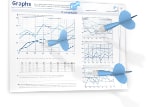
Is Shopify a Millionaire Maker?
Shopify (NYSE:SHOP) is an eCommerce platform, business services provider and…


Shopify (NYSE:SHOP) is an eCommerce platform, business services provider and…

Alphabet tripled its price per share over the past 5…

Coca-Cola (NYSE:KO) and PepsiCo (NYSE:PEP) are two of the largest…
Market Cap: $3.2T
P/E Ratio: 35x
Market Cap: $2.9T
P/E Ratio: 33x
Market Cap: $2.9T
P/E Ratio: 40x
Exodus Movement [EXOD] is up 20.25% over the past day.
Signet Jewelers [SIG] is up 0.26% over the past day.
HealthEquity [HQY] is down 0.64% over the past day.